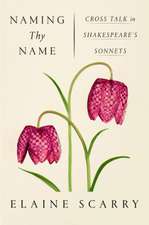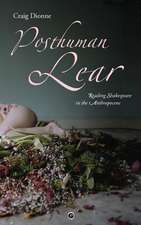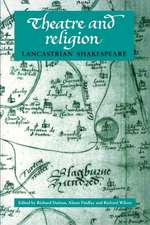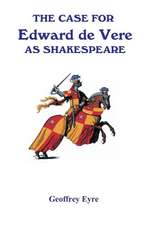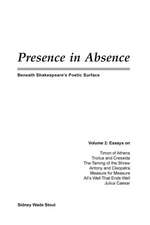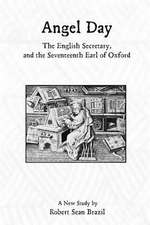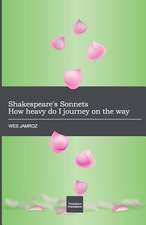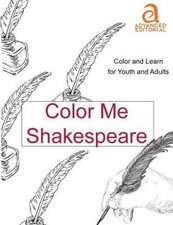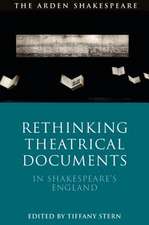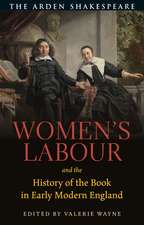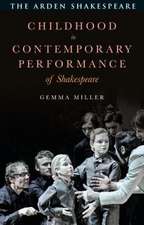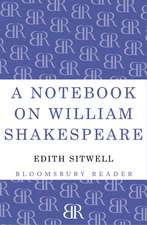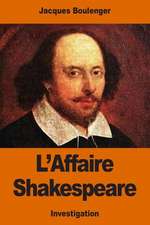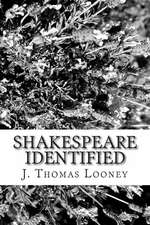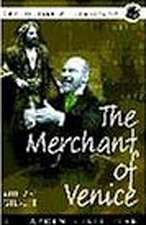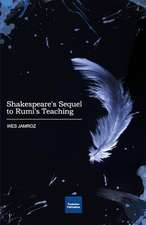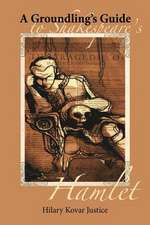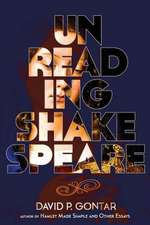To Be or Not to Be: Shakespeare Now!
Autor Professor Douglas Brusteren Limba Engleză Paperback – 14 feb 2007
Toate formatele și edițiile
| Toate formatele și edițiile | Preț | Express |
|---|---|---|
| Paperback (1) | 149.35 lei 6-8 săpt. | |
| Bloomsbury Publishing – 14 feb 2007 | 149.35 lei 6-8 săpt. | |
| Hardback (1) | 282.06 lei 6-8 săpt. | |
| Bloomsbury Publishing – 14 feb 2007 | 282.06 lei 6-8 săpt. |
Din seria Shakespeare Now!
- 9%
 Preț: 150.05 lei
Preț: 150.05 lei - 9%
 Preț: 149.61 lei
Preț: 149.61 lei - 15%
 Preț: 162.36 lei
Preț: 162.36 lei - 15%
 Preț: 162.51 lei
Preț: 162.51 lei - 10%
 Preț: 124.55 lei
Preț: 124.55 lei - 5%
 Preț: 162.82 lei
Preț: 162.82 lei - 14%
 Preț: 149.70 lei
Preț: 149.70 lei - 15%
 Preț: 162.45 lei
Preț: 162.45 lei - 14%
 Preț: 162.71 lei
Preț: 162.71 lei - 15%
 Preț: 162.10 lei
Preț: 162.10 lei - 25%
 Preț: 162.79 lei
Preț: 162.79 lei -
 Preț: 165.48 lei
Preț: 165.48 lei - 15%
 Preț: 162.36 lei
Preț: 162.36 lei - 25%
 Preț: 163.24 lei
Preț: 163.24 lei - 9%
 Preț: 149.54 lei
Preț: 149.54 lei -
 Preț: 128.05 lei
Preț: 128.05 lei
Preț: 149.35 lei
Preț vechi: 164.08 lei
-9% Nou
Puncte Express: 224
Preț estimativ în valută:
28.58€ • 30.05$ • 23.61£
28.58€ • 30.05$ • 23.61£
Carte tipărită la comandă
Livrare economică 16-30 aprilie
Preluare comenzi: 021 569.72.76
Specificații
ISBN-13: 9780826489982
ISBN-10: 0826489982
Pagini: 128
Dimensiuni: 129 x 198 x 10 mm
Greutate: 0.15 kg
Editura: Bloomsbury Publishing
Colecția Continuum
Seria Shakespeare Now!
Locul publicării:London, United Kingdom
ISBN-10: 0826489982
Pagini: 128
Dimensiuni: 129 x 198 x 10 mm
Greutate: 0.15 kg
Editura: Bloomsbury Publishing
Colecția Continuum
Seria Shakespeare Now!
Locul publicării:London, United Kingdom
Caracteristici
uncovers the theatrical background to the speech and shows how actors, theatregoers and readers have responded to it from Shakespeare's time to the present
Cuprins
General Editors' Preface
1. In the Shakespeare Museum
2. What are the Questions?
3. There's the Rub
4. How Does it Mean? (The Speech as Poem)
5. The Name of Action (The Speech in Context)
6. Not One Speech but Three, or 'There's the Point'
7. Consummation (Some Conclusions)
8. Acknowledgments and Further Reading
Index
1. In the Shakespeare Museum
2. What are the Questions?
3. There's the Rub
4. How Does it Mean? (The Speech as Poem)
5. The Name of Action (The Speech in Context)
6. Not One Speech but Three, or 'There's the Point'
7. Consummation (Some Conclusions)
8. Acknowledgments and Further Reading
Index
Recenzii
"Douglas Bruster's To Be or Not to Be should delight and instruct anyone who has ever read, seen, or struggled with the central speech of Hamlet...Bruster has done a remarkable job building bridges over notoriously choppy waters, and this book is highly recommended." - Studies in English Literature, Spring 2008
"[A] fine contribution to our understanding of Shakespeare as artist nonpareil. I was particularly taken with Bruster's insight into the way this 'most resonant presentation of the personal in all of literature' achieves a surprising impersonality by eschewing the use of the first person, making the speech 'float above the rest of the play'." - Michael Taylor, Shakespeare Survey 61 (2008)
"The ambitious project of the Shakespeare NOW series is to bridge the gap between 'scholarly thinking and a public audience' and 'public audience and scholarly thinking'. Scholars are encouraged to write in a way accessible to a general readership and readers to rise to the challenge and not be afraid of new ideas and the adventure they offer. There are other bridges the series is ambitious to cross: 'formal, political or theoretical boundaries' - history and philosophy, theory, and performance." English Vol. 58, 2009
"[Shakespeare Now! is] an innovative new series... Series editors Simon Palfry and Ewan Fernie have rejected the notion of business as usual in order to pursue a distinctive strategy that aims to put "cutting-edge scholarship" in front of a broad audience. Shakespeare Now! with its insistent appeal to the contemporary- this is fresh Shakespeare for readers turned off by the prospect of dry-as-dust scholarship-aims to reach a general audience... The book [To Be or Not to Be] commences with an intriguing conceit: Bruster imagines a Shakespeare museum with rooms for different plays. In this fantasized museum, there is an "entire gallery devoted" to Hamlet's famous soliloquy (1). What this gallery offers is a chronological sequence of overlapping performances beginning with the earliest and continuing up to the present. An oral palimpsest is created, as more and more speakers add their voices to the mixture- this idea neatly captures the enormous multiplicity of Hamlets that have come into being, but it also manages to maintain the singularity of the text, despite the differences in presentation (not only embodied performance, but gramophone, film, and video) and even language... To Be or Not To Be is a precisely rendered formalist exercise"
"[A] fine contribution to our understanding of Shakespeare as artist nonpareil. I was particularly taken with Bruster's insight into the way this 'most resonant presentation of the personal in all of literature' achieves a surprising impersonality by eschewing the use of the first person, making the speech 'float above the rest of the play'." - Michael Taylor, Shakespeare Survey 61 (2008)
"The ambitious project of the Shakespeare NOW series is to bridge the gap between 'scholarly thinking and a public audience' and 'public audience and scholarly thinking'. Scholars are encouraged to write in a way accessible to a general readership and readers to rise to the challenge and not be afraid of new ideas and the adventure they offer. There are other bridges the series is ambitious to cross: 'formal, political or theoretical boundaries' - history and philosophy, theory, and performance." English Vol. 58, 2009
"[Shakespeare Now! is] an innovative new series... Series editors Simon Palfry and Ewan Fernie have rejected the notion of business as usual in order to pursue a distinctive strategy that aims to put "cutting-edge scholarship" in front of a broad audience. Shakespeare Now! with its insistent appeal to the contemporary- this is fresh Shakespeare for readers turned off by the prospect of dry-as-dust scholarship-aims to reach a general audience... The book [To Be or Not to Be] commences with an intriguing conceit: Bruster imagines a Shakespeare museum with rooms for different plays. In this fantasized museum, there is an "entire gallery devoted" to Hamlet's famous soliloquy (1). What this gallery offers is a chronological sequence of overlapping performances beginning with the earliest and continuing up to the present. An oral palimpsest is created, as more and more speakers add their voices to the mixture- this idea neatly captures the enormous multiplicity of Hamlets that have come into being, but it also manages to maintain the singularity of the text, despite the differences in presentation (not only embodied performance, but gramophone, film, and video) and even language... To Be or Not To Be is a precisely rendered formalist exercise"

